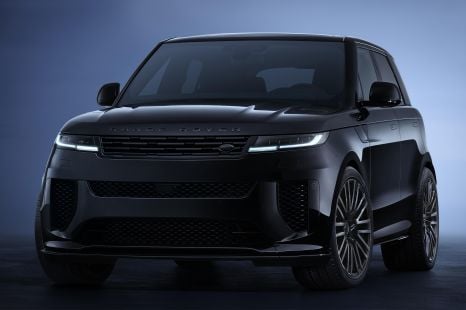

William Stopford
15 Days Ago
Volkswagen's best-selling passenger car is a strong unit, and the R-Line scratches that performance itch nicely.
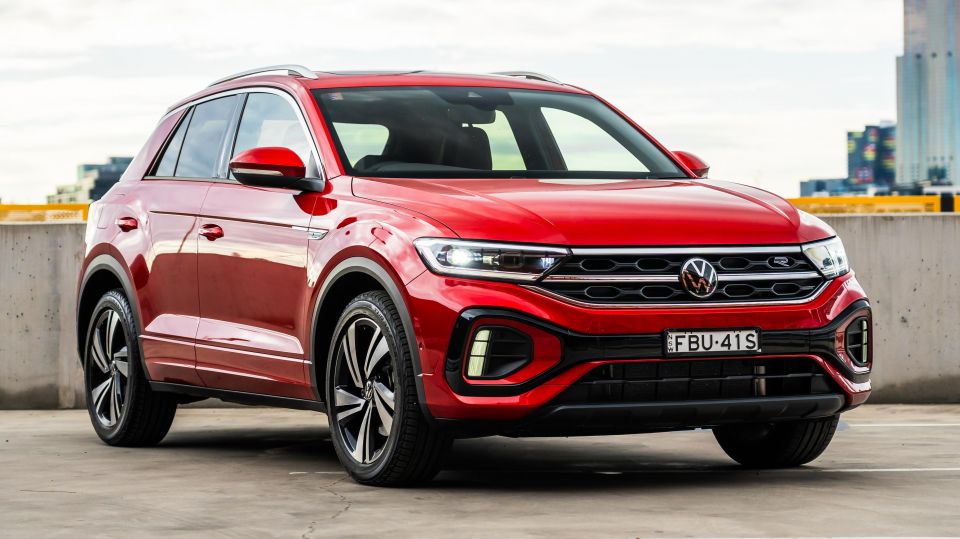
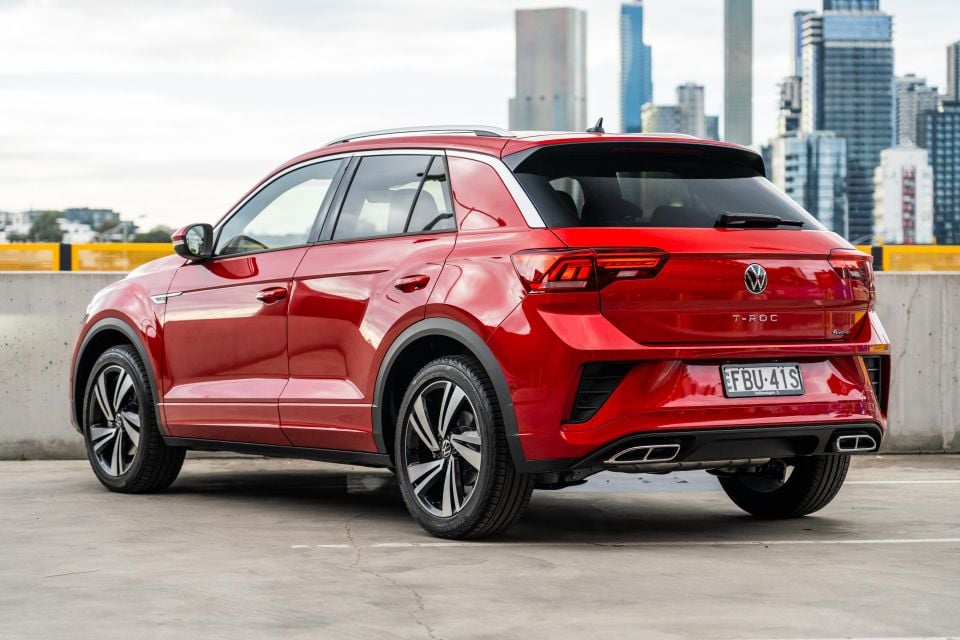

Quickly see how this car stacks up against its competition. Select any benchmark to see more details.
Take advantage of Australia's BIGGEST new car website to find a great deal on a Volkswagen T-Roc.
As was the case in 2023, the Volkswagen T-Roc remains the German auto brand’s best-selling car in Australia.

But to the end of September 2024, the small SUV has fallen one spot down the overall Volkswagen sales chart. It’s now runner-up to the new VW Amarok, though the dual-cab ute technically falls under the brand’s commercial vehicles umbrella.
So although you might have thought the popular European brand’s top-seller would be something like the Golf, it simply isn’t the case anymore as buyer demand shifts towards SUVs and utes. While 1902 Golfs have found homes so far this year, that’s a lot less than 5979 T-Rocs and even 3639 Tiguans, even if they all share the same basic Volkswagen platform underneath.
The T-Roc is still drastically overshadowed by the MG ZS (16,907) in its segment though, and ranks behind other small SUVs like the Hyundai Kona at 13,352 and even the Subaru Crosstrek at 8765.
On test here is the 2025 Volkswagen T-Roc R-Line, which sits one rung below the top of the range.
That range-topping variant is the hotted-up T-Roc R, but the R-Line still packs more of a punch and brings nicer equipment than the cheaper and lower-spec CityLife and Style variants.
It comes with the caveat of a more expensive asking price as it’s more than $10,000 pricier than the cheapest T-Roc variant currently available.
Is it worth stretching for a faster small SUV like the R-Line, or would you be better off with a lesser version?
The R-Line is the most expensive T-Roc grade priced under $50,000, and it costs a lot more than either of the two variants below it, but also a lot less than the flagship R.
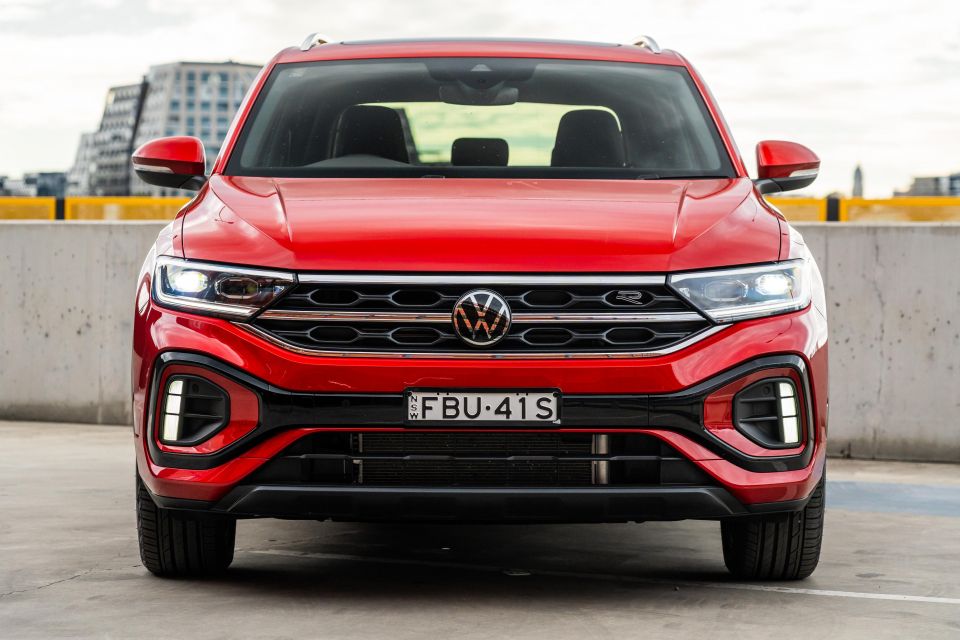
| Model | Price |
|---|---|
| 2025 Volkswagen T-Roc CityLife | $36,990 |
| 2025 Volkswagen T-Roc Style | $40,590 |
| 2025 Volkswagen T-Roc R-Line | $48,790 |
| 2025 Volkswagen T-Roc R | $63,490 |
To see how the Volkswagen T-Roc stacks up against its rivals, use our comparison tool.
Even if it’s been around since 2017, the T-Roc brings a quality interior.
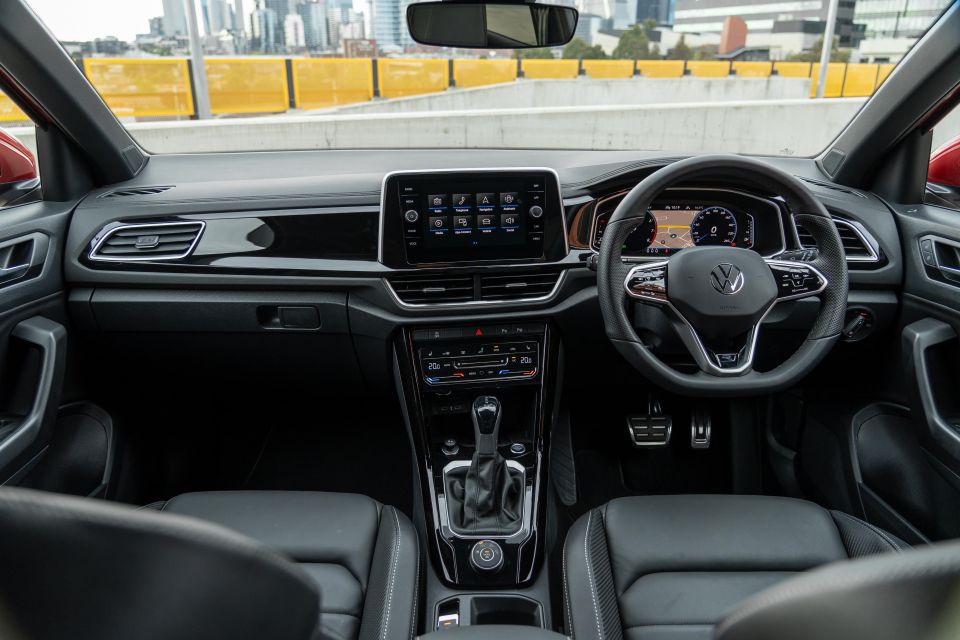
Hopping into the driver’s seat and getting situated takes but a moment, and it’s hard to argue with the presentation you’re greeted with. Most of the key areas are pleasant to touch, and there are several R-Line goodies to look at too.
The seats themselves are upholstered in leather with carbon-fibre-look accents unique to the R-Line, and they do well to support the front passengers in side-to-side movement. Even if it is a small SUV, having well-bolstered seats can make a car feel much more confidence-inspiring, and the T-Roc is better for it.
Similar materials continue up to the steering wheel, which is large and features generous cut-outs at nine and three o’clock. I’m a fan of Volkswagen steering wheels and this is no exception – the perforated leather and subtle R logo are added reminders of the car’s sporty inclination.
The only real complaint we have is that the wheel is limited in its adjustability. When the driver’s seat was in a comfortable position for my average height, the steering wheel wouldn’t tilt as low as I would’ve liked. It’s not the end of the world, but does force a small compromise.
Another gripe is the materials up front, because the door cards and dash are plastered in scratchy hard plastic. While you won’t be touching those areas too often, it’s not the nicest thing to have in a car at this price point.
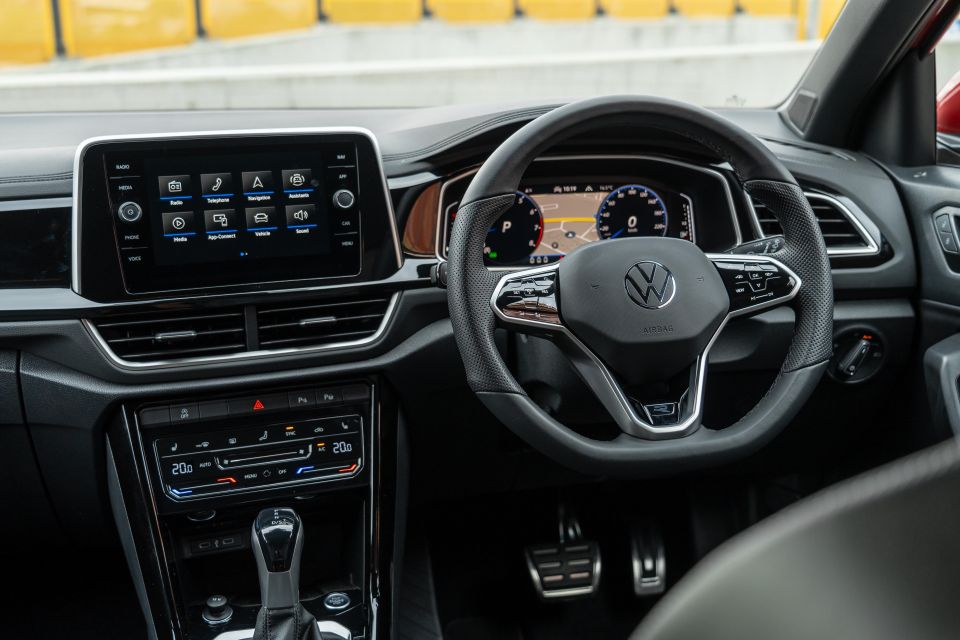
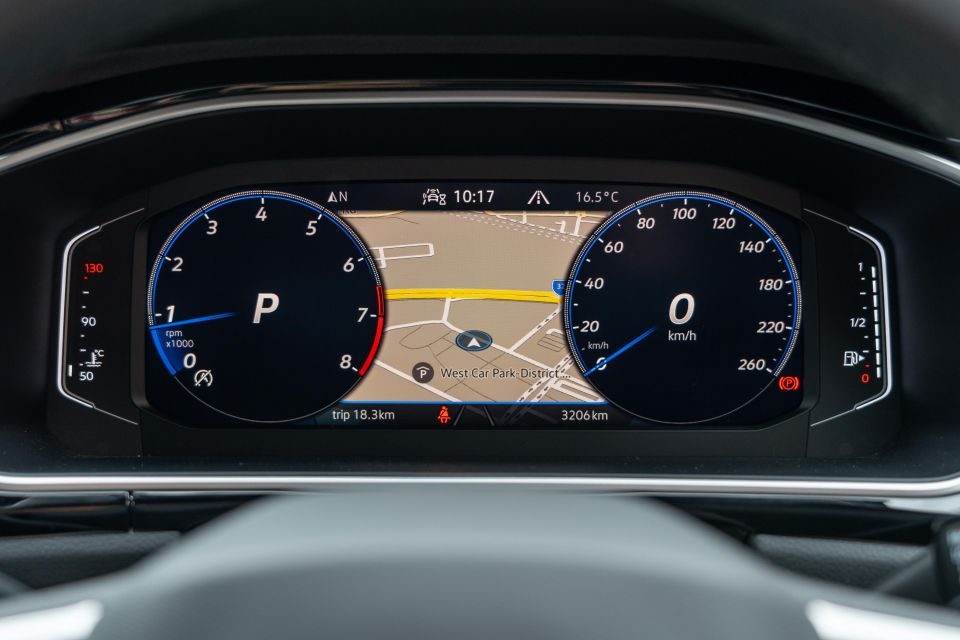
On the topic of the steering wheel, it’s fitted with haptic touch controls rather than physical buttons. The T-Roc is by no means the only Volkswagen product to have utilised such a setup, but it can be annoying to use.
Because you can both touch and ‘press’ the controls, it’s sometimes difficult to know exactly what you’re interacting with. Accidentally brushing a finger on the button surface can unintentionally adjust something like the volume or information display, which can be frustrating.
At least the buttons in the T-Roc are positioned far enough away from the outside of the wheel that your palms won’t accidentally press the buttons in normal driving, and you’d almost certainly have no problems once you’ve had time to adjust to such controls.
It would still benefit from physical buttons as is more typical, but overall the driving controls are a neat package.


Moving your attention to the centre of the cabin starts to reveal some issues. While you do get a nicely sized gear selector, there’s a bit too much gloss-black plastic around it for our liking.
The starter button and drive mode selector are both placed in a sea of gloss-black, which invites fingerprints and scratches. Above that is the climate control system, which seems more complicated than it should be.
To its benefit it is positioned on a dedicated panel, but again that panel is finished in gloss-black. All the controls here are touch-operated too, which can be fiddly on the move.
Sliding your finger to adjust temperature or fan speed is a bit alien at first, and repeatedly tapping either end of the sliders doesn’t feel right.
The button to adjust the fan direction isn’t clear either, and it’s again a touch button on the top row of the display. There weren’t any real issues with the way the system functioned in our week with the car, but it’s just a bit more tedious than we’d like it to be.
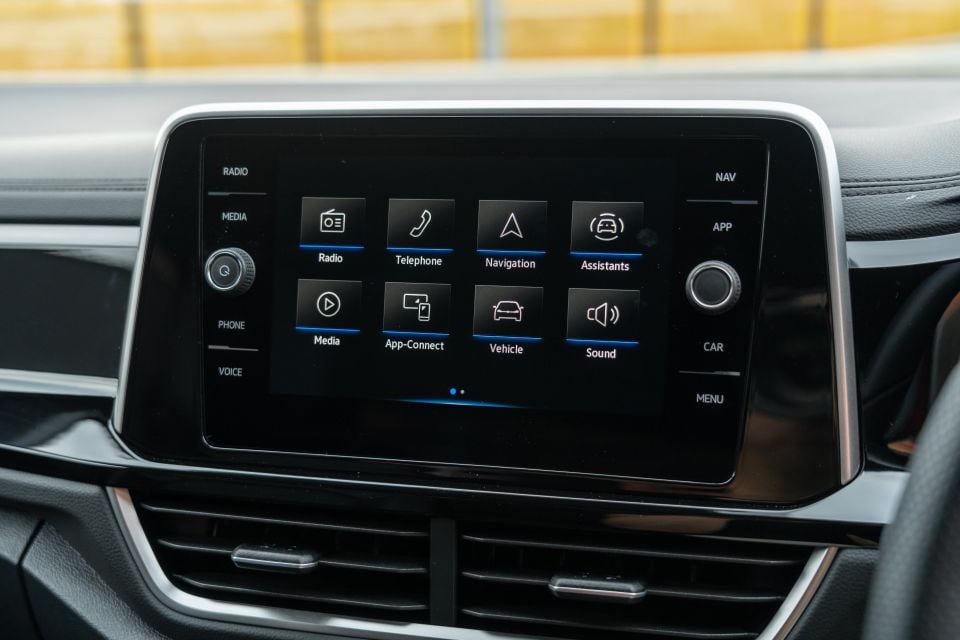
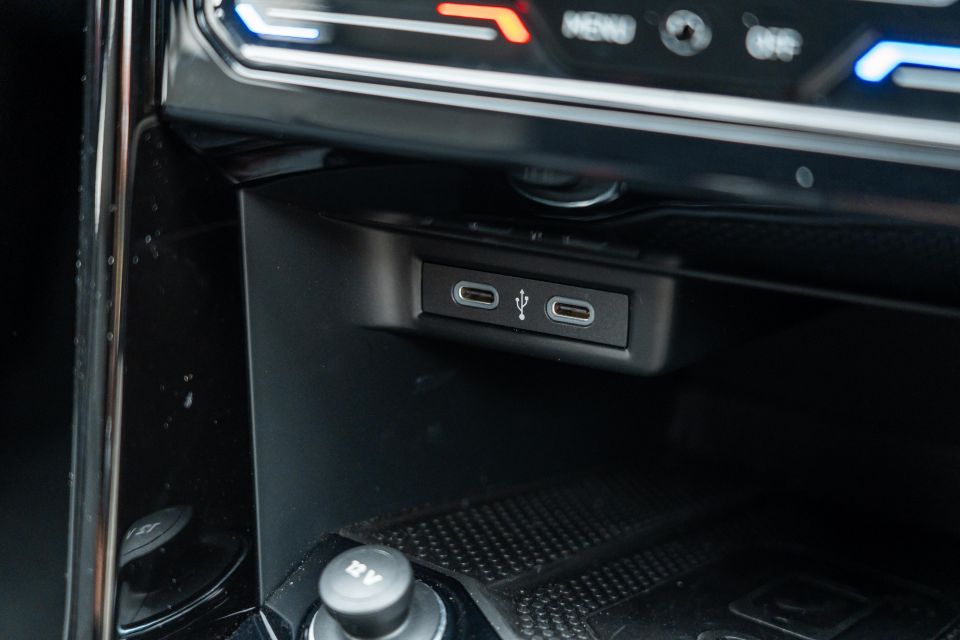
Above the climate control system is another selection of buttons to toggle auto stop/start and parking sensors, though they seem poorly made. The whole plastic piece they’re located on can wobble around, and each button has a lot of side-to-side movement.
Fortunately, you won’t be pressing these buttons too much (unless you’re strongly against auto stop/start), but given how sturdy the rest of the cabin is we’d expect better here.
Further up again is the infotainment system, which is beginning to look dated. It’s clean enough and works well, but its display seems small even if it is the larger of the two screens offered across the T-Roc range.
It’s nice to have shortcut buttons on either side of the screen, and the two physical knobs make it easier for passenger DJs to interact with the system. Wireless Apple CarPlay is an added bonus too, and aside from some hiccups in the various black spots around Melbourne it worked without issue.

Storage up front is solid, but not outstanding. In the centre of the car is a set of cupholders, which is arranged with two holders for larger cups and one small holder in the middle.
The larger options are squared-off, which means they won’t hold larger cups as snug as they could. Its arrangement also means if you have a smaller cup in the middle, usability elsewhere will be limited.
Behind that is a nicely sized centre console box, and alongside is a slot that fits the car’s key fob nicely. Ahead of the gear selector is a cubby that’ll comfortably fit most phones, and there’s a wireless charging pad in there too.
It works well, but my phone did get hot after spending longer periods of time charging. You also have the option of charging your phone via either of the USB-C ports above or the 12V outlet nearby.
Other storage options include a standard passenger-side glovebox and bottle holders in the doors.
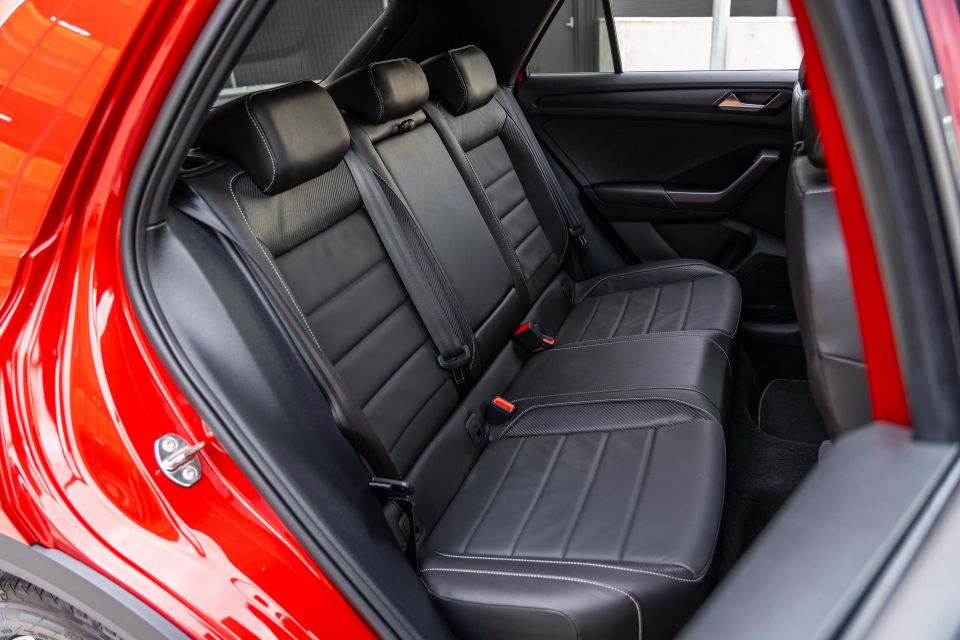
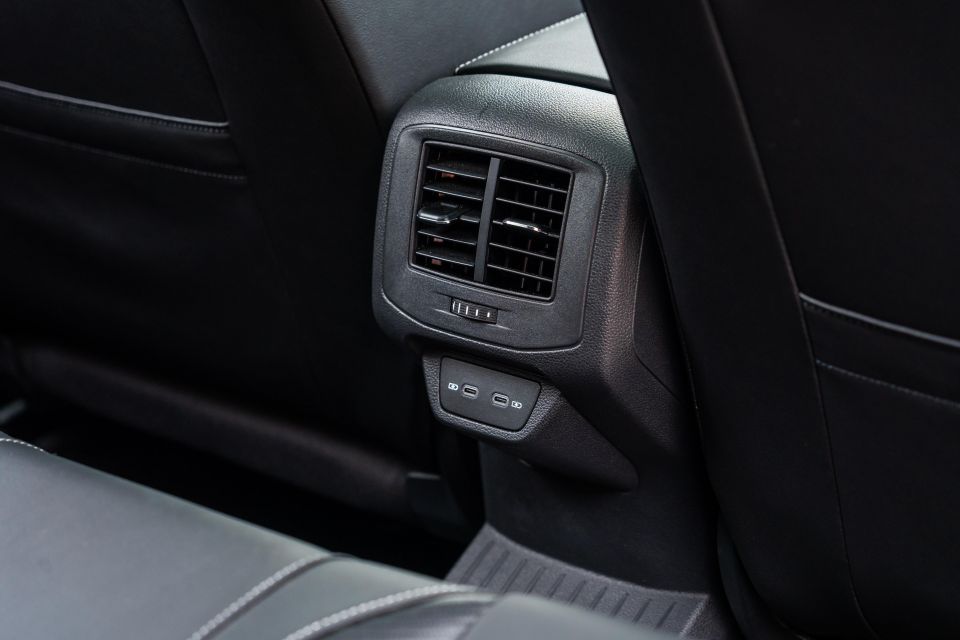
The rear seats feature the same carbon-fibre accented leather upholstery as up front, and there’s plenty of room to get comfortable. There is the capacity for three people to sit here, but foot space for passengers in the middle is compromised by the AWD driveline tunnel.
Passengers in the back are catered for by the inclusion of dual USB-C charging ports, as well as air vents on the back of the centre console.
There’s more of that scratchy plastic here too, which takes away from the nicer atmosphere created by the black upholstery and large panoramic sunroof.
Storage is also limited to cupholders on the fold-down centre armrest and bottle holders in the doors, and there’s enough head- and leg room for most rear passengers to stay comfortable.
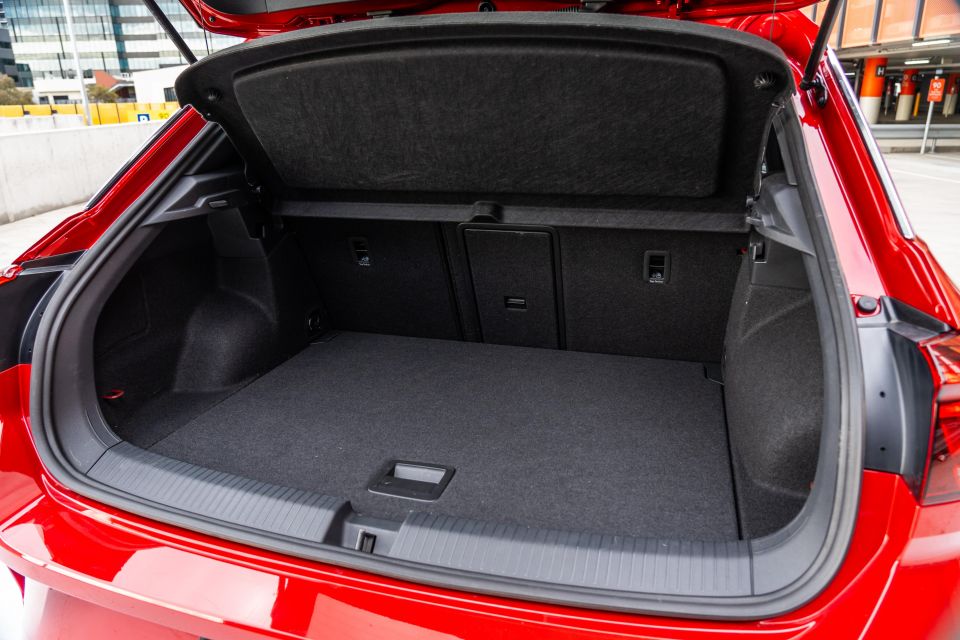
Boot space is compromised vertically, but the load floor is long enough to fit a standard suitcase easily. There’s a passthrough into the back seats too, which means you’ll be able to fit longer items and retain use of the outboard seats at the same time.
The entire rear row can also fold flat for maximum capacity.
There is a drop from the boot entrance to the floor, which means you will have to lift items up and over instead of sliding them in. There’s a space-saver spare under that large loading floor too, which offers a bit of added security should you run into any troubles.
Volkswagen provides some tie-down points to secure loads as well, and there’s a sturdy privacy cover on top to keep things hidden. It’s a perfectly practical boot, and it ranks well against the Crosstrek (291L) and equivalent Kona (407L).
| Dimensions | Volkswagen T-Roc R-Line |
|---|---|
| Length | 4236mm |
| Width | 1819mm |
| Height | 1587mm |
| Wheelbase | 2596mm |
| Cargo capacity | 392L (rear seats up) 1237L (rear seats folded) |
To see how the Volkswagen T-Roc stacks up against its rivals, use our comparison tool.
The R-Line variant is all-wheel drive and powered by a turbocharged 2.0-litre four-cylinder engine. Its outputs are up 30kW and 70Nm from the 1.4-litre CityLife and Style, but down 81kW and 80Nm on the 2.0-litre R.
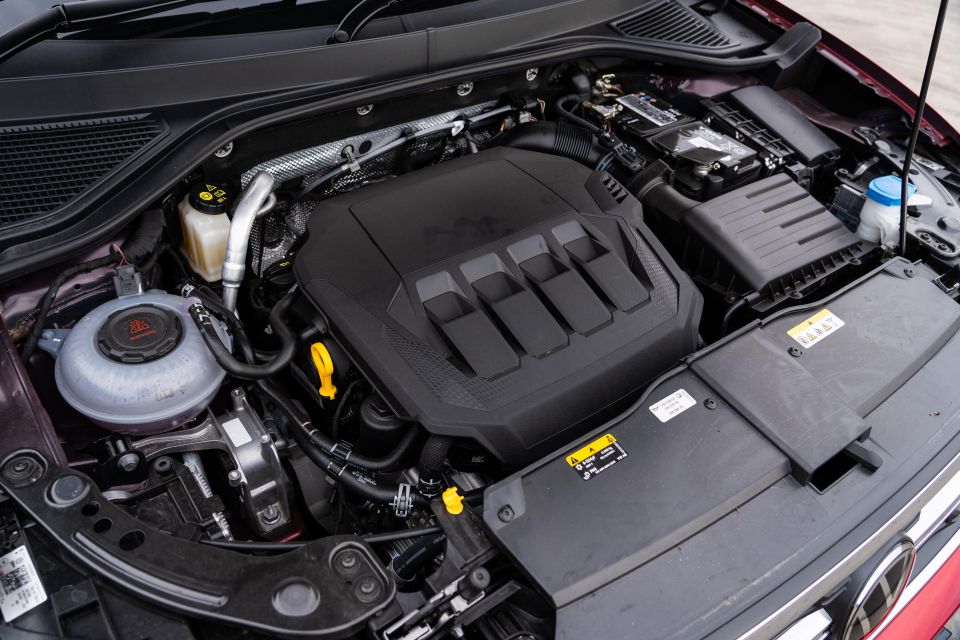
| Specifications | Volkswagen T-Roc R-Line |
|---|---|
| Engine | 2.0-litre turbocharged 4cyl |
| Power | 140kW @ 4200-6000rpm |
| Torque | 320Nm @ 1450-4200rpm |
| Transmission | 7-speed dual-clutch automatic |
| Driven wheels | AWD |
| Tare weight | 1516kg |
| Fuel economy (claimed) | 7.3L/100km |
| Fuel economy (as tested) | 7.1L/100km |
| Fuel tank capacity | 55L |
| Fuel requirement | 95 RON |
| CO2 emissions | 165g/km |
| Braked tow capacity | 1700kg |
To see how the Volkswagen T-Roc stacks up against its rivals, use our comparison tool.
Even before getting behind the wheel of the T-Roc R-Line, I was eager to see what it was all about.
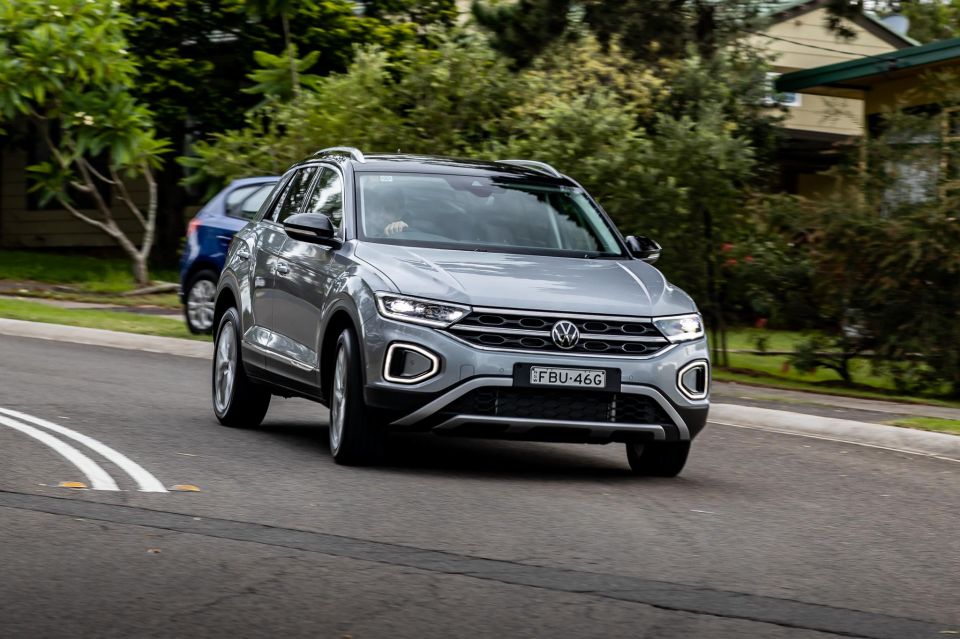
The tickled-up engine in the R-Line was the main drawcard for me, and on that front it delivered. As it’s a small car, so the 2.0-litre engine doesn’t have to work hard to get things moving – in fact it’s surprisingly fast.
Put your foot down from a standstill and there’s a slight hesitation as the gears move about and engage, but once it’s rolling it pulls much like a performance hatch. That isn’t a shock given it shares its bones with the Golf, but you don’t necessarily expect something like that from a small SUV like the T-Roc.
Performance is noticeably dulled if the car’s full of passengers and cargo, but that still won’t be enough to make it feel slow. As an all-rounder, it benefits from that juiced-up powertrain, which is a good middle ground for someone who wants something peppy and capable without going over the top.
If you want to be more involved with the driving experience, you can flick the shifter into Sport mode and make use of the paddles behind the wheel. It’s not as responsive to paddle inputs as we’d like, but it does just enough to remind you it’s meant to be a warmer version of the standard T-Roc.
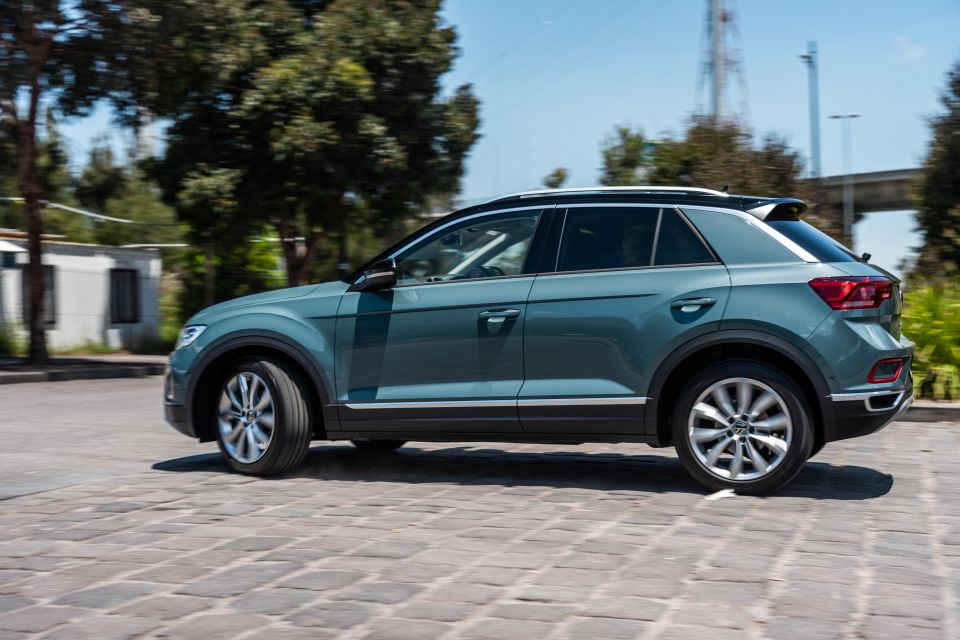
As it’s a fairly typical Volkswagen model, you’d be right to expect power to be sent to the wheels through a dual-clutch automatic transmission.
Unlike a lot of other twin-clutch setups though, the gearbox in the R-Line is a smooth and comfortable unit. Shifts are buttery and consistent, to the point where they’re almost imperceptible beyond third gear.
You do get a bit of the typical low-speed stumble when setting off from a standstill, but it’s by no means unbearable.
The number of gears means you also have plenty of capability for different driving situations; RPM stays low on the highway, it’s rarely caught in the wrong gear for a quick getaway, and it holds gears on hills without issue.
Even if it does need to grab a lower gear, it’ll kick down without hesitation to make sure the engine and turbo are in their ideal window for maximum power. All-wheel drive is a bonus that means the car never has any trouble gripping up either.
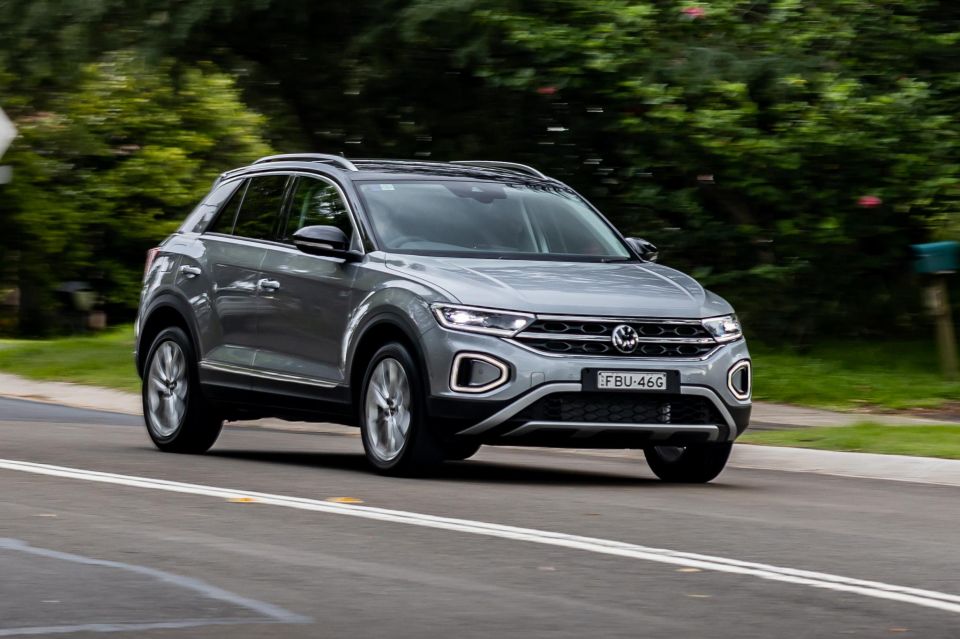
Find out more about the car
The sporty performance is supported by the ride. It’s comfortable on long drives and does well to handle rough country roads, and the fact they’re adaptive gives you a wide range of capability.
In twisty sections you can stiffen the suspension right up, giving you a well-composed ride as the body stays flat. That allows you to carry speed through turns without falling over, setting it apart from other lower-end SUVs.
Calling the T-Roc an SUV almost doesn’t feel right as a result, since it behaves much more like a hatchback despite its jacked-up stance. The default setting is on the firmer side and can wear on rear seat passengers in particular, but riding in the front can be quite fun.
The only thing that caught us off guard was the brake feel, which can be touchy if you’re not used to it. On the other hand, a benefit is that it stops quickly and consistently.
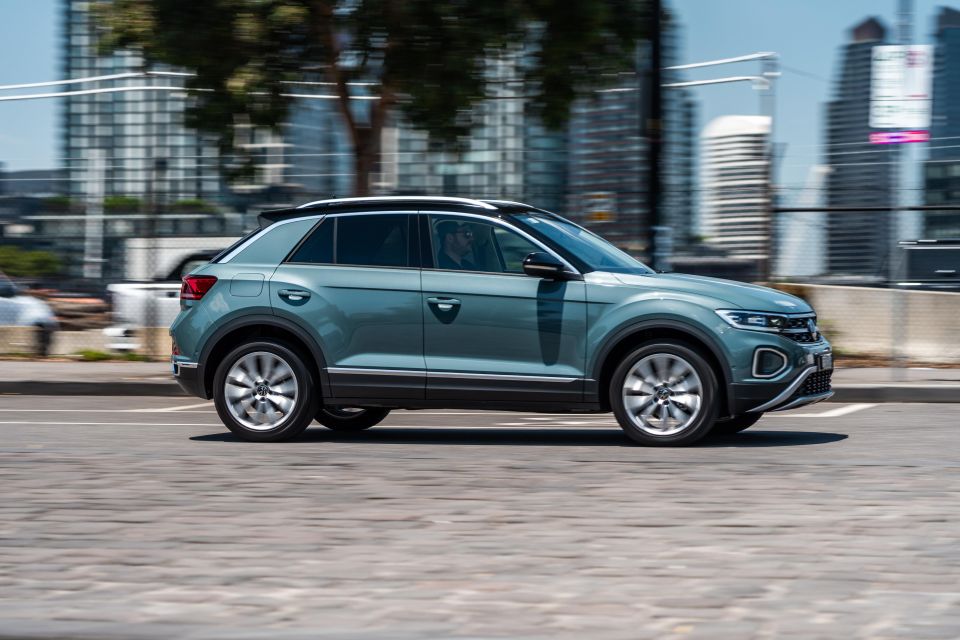
Assisting the driving experience is a range of tech, including adaptive cruise control and lane centring. Both worked flawlessly in our week with car, even on tighter country roads with narrow lanes and unexpected bends.
To that point, we had no issues with any of the safety tech while on the road. Things like the lane departure warning pipe up if you begin to drift over the line, but won’t aggressively hinder you if you need to dodge hazards like potholes or bumps.
Its driver attention monitoring also worked exactly as it should. It didn’t ping us for checking the side mirrors, and it wasn’t overly sensitive to head-checks or infotainment adjustments.
The T-Roc brings an impressive package, and it’s always reassuring to know the car can back itself with a range of safety tech that is well-calibrated and easy to live with.
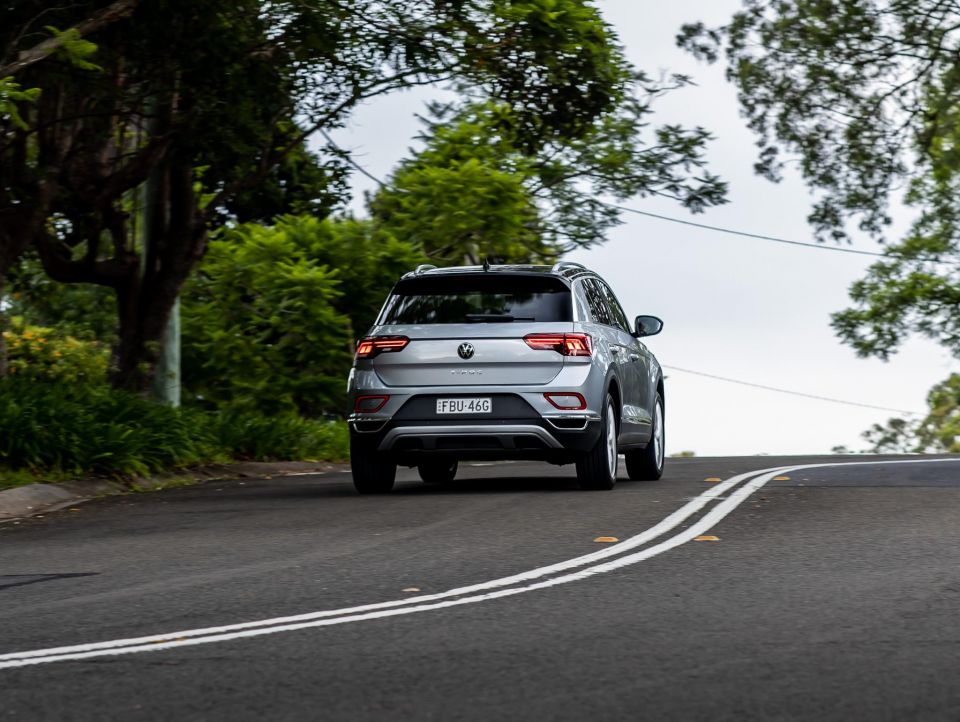
While the T-Roc is a solid car to drive, there’s only one real complaint. That’s the road noise, as the R-Line rides on larger wheels with lower-profile tyres than its cheaper siblings.
On coarse roads in rural Victoria it can become annoying, and will often require you to crank up the music volume to drown it out.
The firmer suspension doesn’t help on that front either, but at least you have some idea of what you’re getting into with the R-Line badging on the outside.
It’s by no means a new problem for European cars like this one and isn’t reason to push it to the side, as the rest of the package is neatly put together and delivers a solid, high-quality on-road experience.
To see how the Volkswagen T-Roc stacks up against its rivals, use our comparison tool.
There are four distinct grades of T-Roc, and the R-Line is second from the top of the range behind the full-fat R.
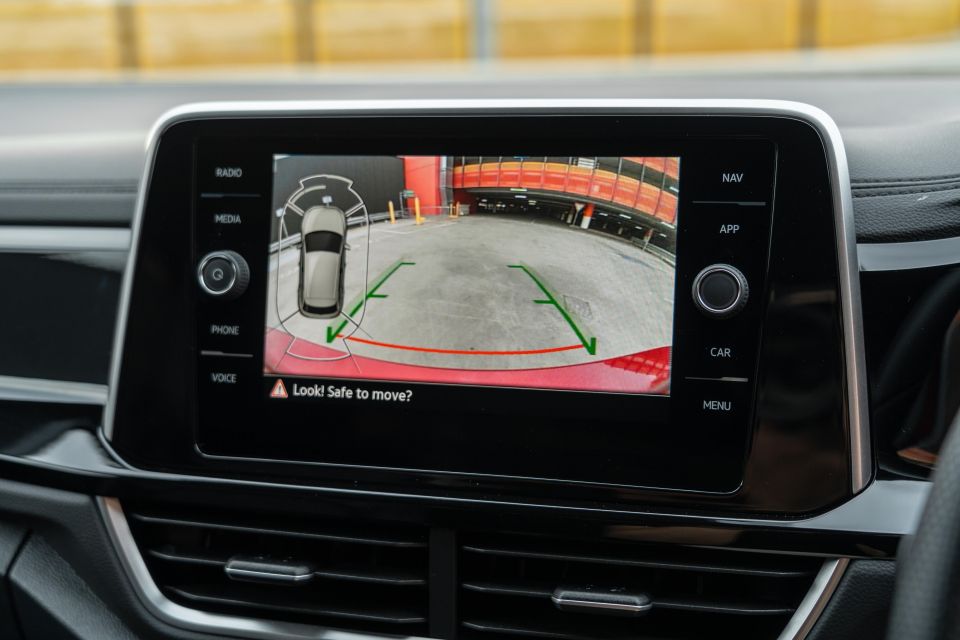

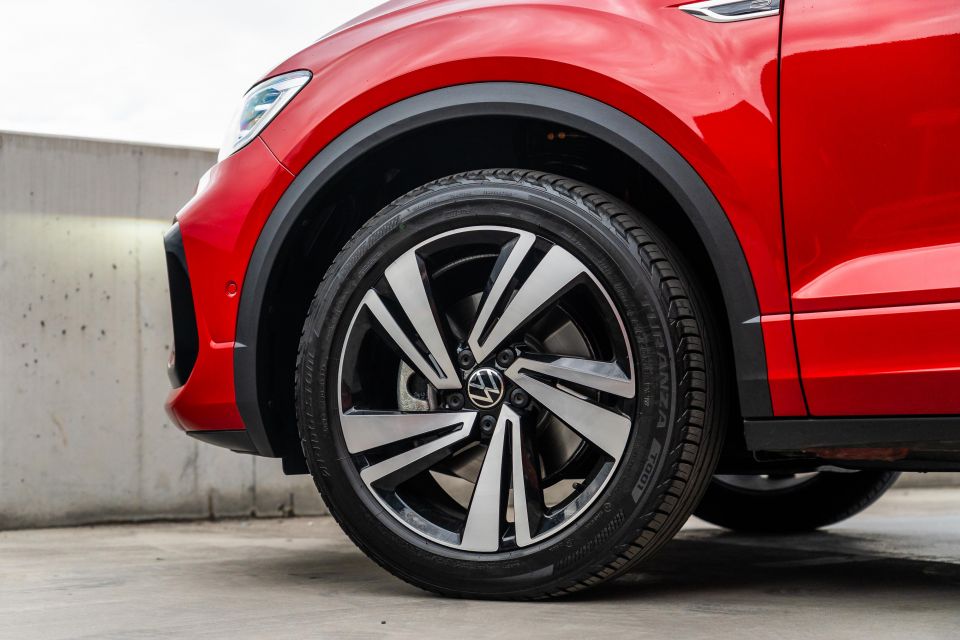
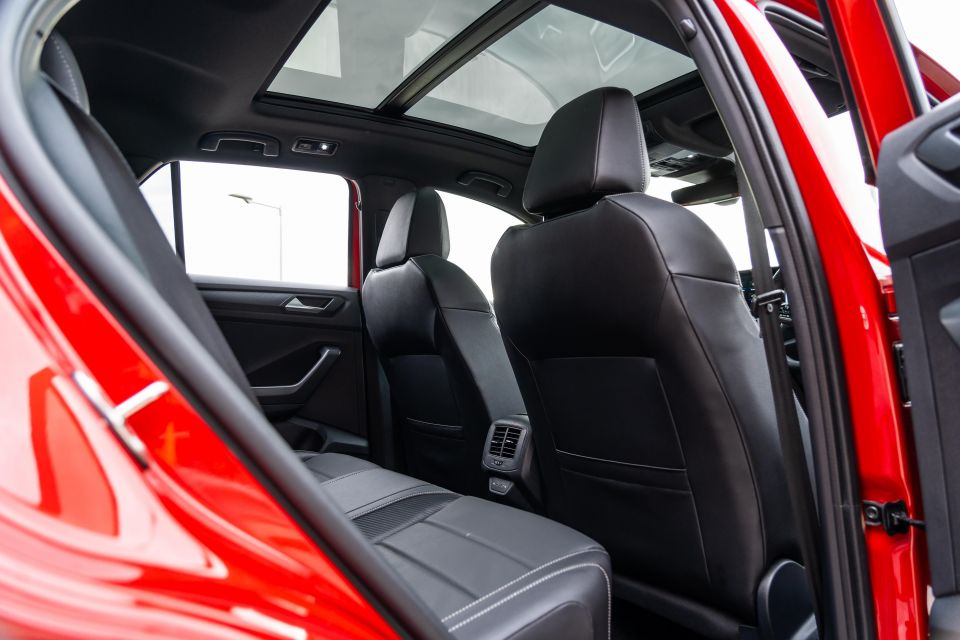
The CityLife includes the following features as standard:
The Style adds:
The R-Line adds:
The Volkswagen T-Roc achieved a five-star ANCAP safety rating based on testing conducted in 2017, but that has now expired. It is therefore unrated.
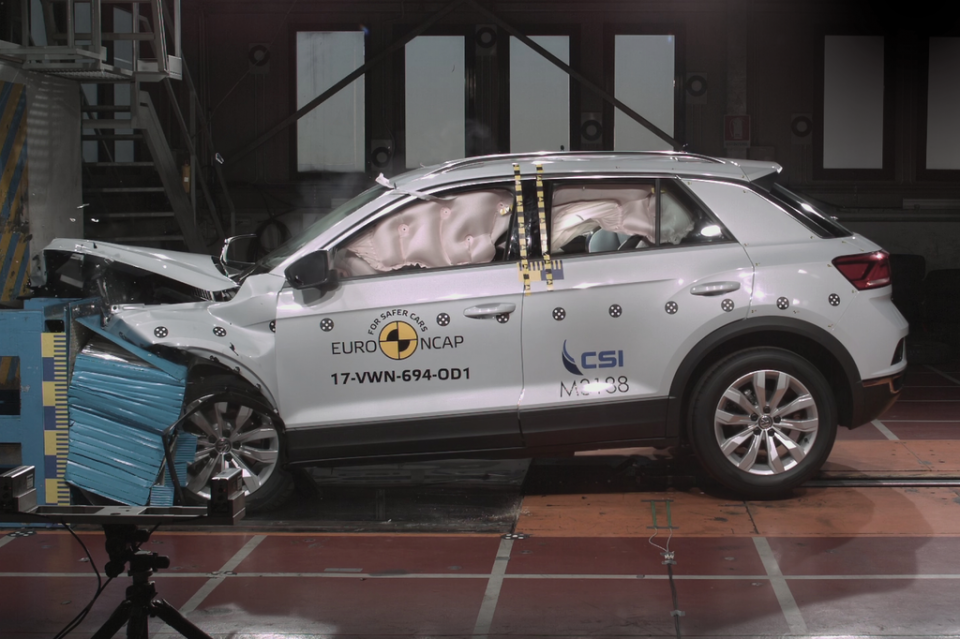
Standard safety features on the T-Roc range include:
Style adds:
The Volkswagen T-Roc is covered by Volkswagen’s five-year, unlimited-kilometre warranty.
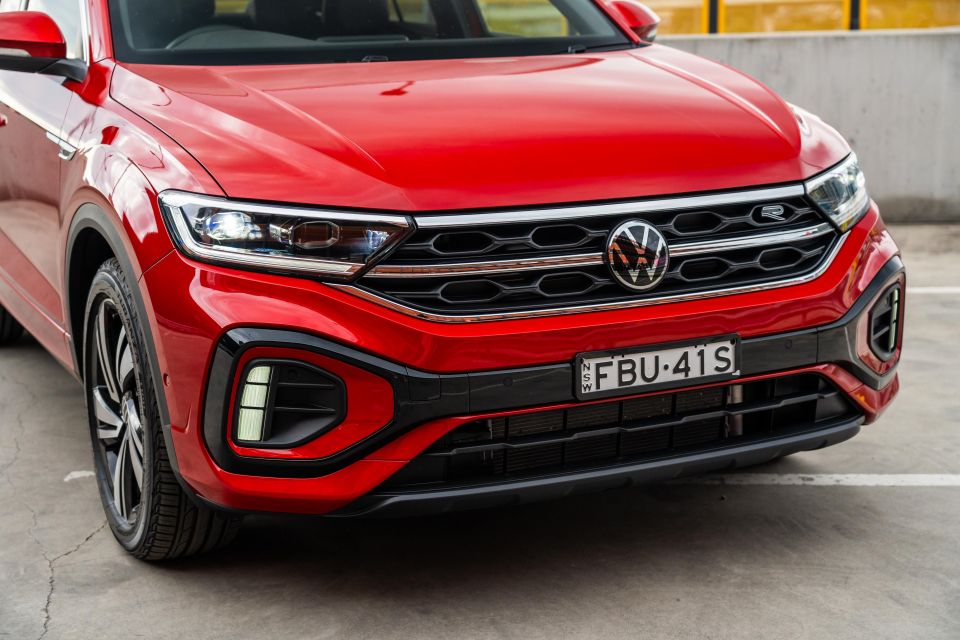
Volkswagen doesn’t quote capped price servicing, instead outlining ‘Assured Price Servicing’ for the first five visits. The brand has a disclaimer that says the service pricing indicated on its price guide is only current for the day it is obtained, so prices are likely to change.
| Running costs | Volkswagen T-Roc R-Line |
|---|---|
| Warranty | 5 years, unlimited kilometres |
| Roadside assistance | 12 months, then service-initiated |
| Service intervals | 12 months or 15,000km |
| “Assured Price Servicing” | 5 years |
| First service | $510 |
| Second service | $957 |
| Third service | $510 |
| Fourth service | $1374 |
| Fifth service | $510 |
| Total capped-price service cost | $3861 |
To see how the Volkswagen T-Roc stacks up against its rivals, use our comparison tool.
The T-Roc is a great car even in entry-level form, and the R-Line adds that bit of extra spice on top.
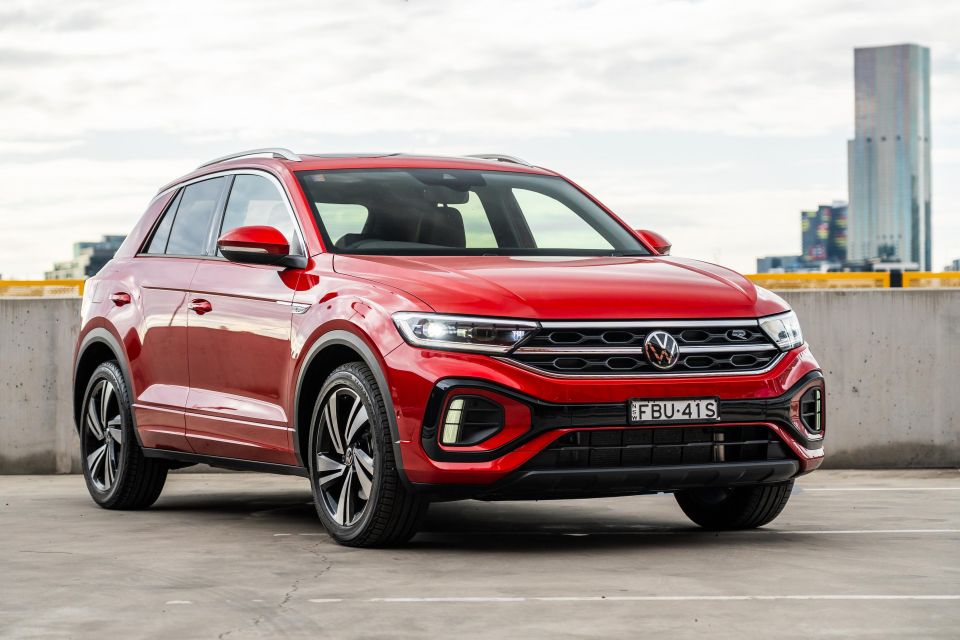
If you want a warm small SUV that is still versatile enough for the daily run-around, this is a strong contender. Good performance, sporty yet compliant handling, and a well-appointed interior are key drawcards here.
The materials in the front of the cabin leave a bit to be desired, but that isn’t a deal-breaker. On the road, you hardly notice the cabin’s less polished elements anyway, as you’re much more likely to be focused on the enthusiastic way it drives.
R-Line-specific seats help here, as does the nicely proportioned steering wheel and strong visibility all around.
The only issue is the price, because while you do get a higher-output engine and some nicer bits, there’s no getting around the fact it’s well above the T-Roc’s CityLife entry price point.
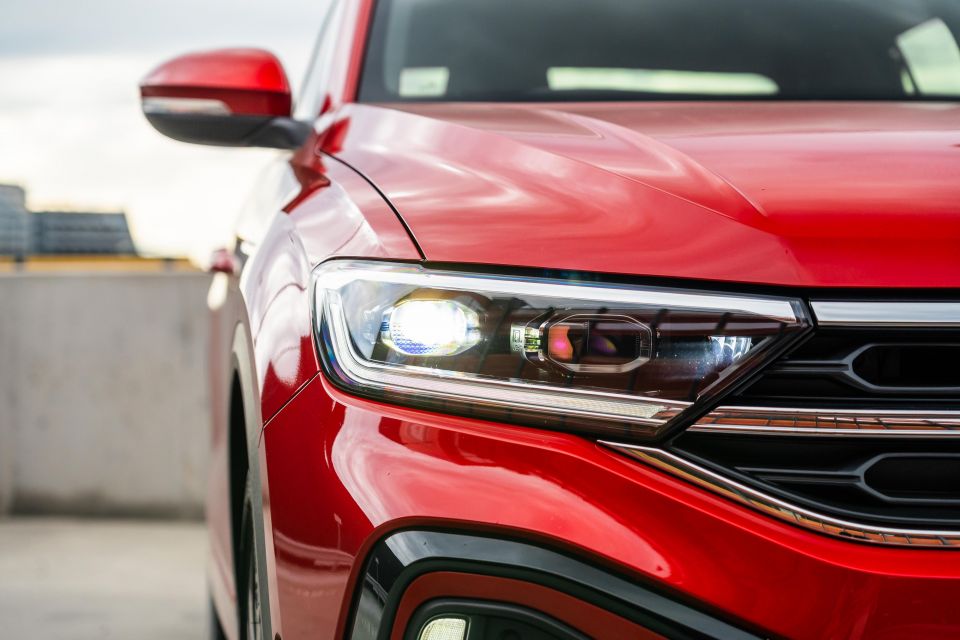
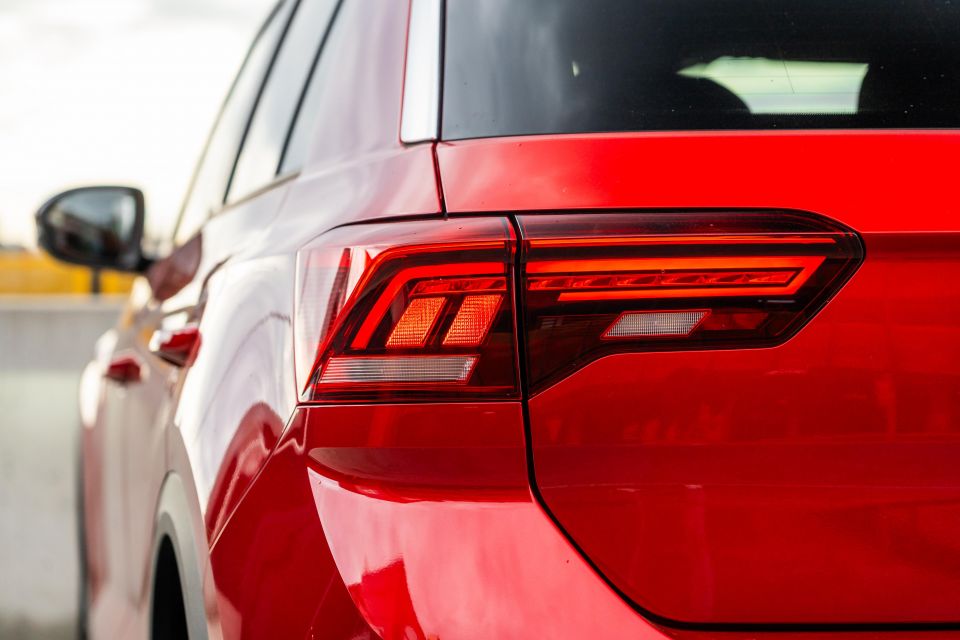
If you really want extra performance from your small SUV and can justify the price, you’ll love being behind the wheel of a T-Roc R-Line.
Those with small families will find it a comfortable fit too, and the warmed-over T-Roc shows you don’t have to go for a boring, slow car if you need something to transport kids, pets, and groceries.
The compact proportions will suit many people too, especially those living in built-up areas. Practicality and cargo space isn’t compromised either, in fact it out-does a lot of its competition.
Could you get by with a cheaper T-Roc? Sure, but it’s hard to beat the spicier R-Line package.
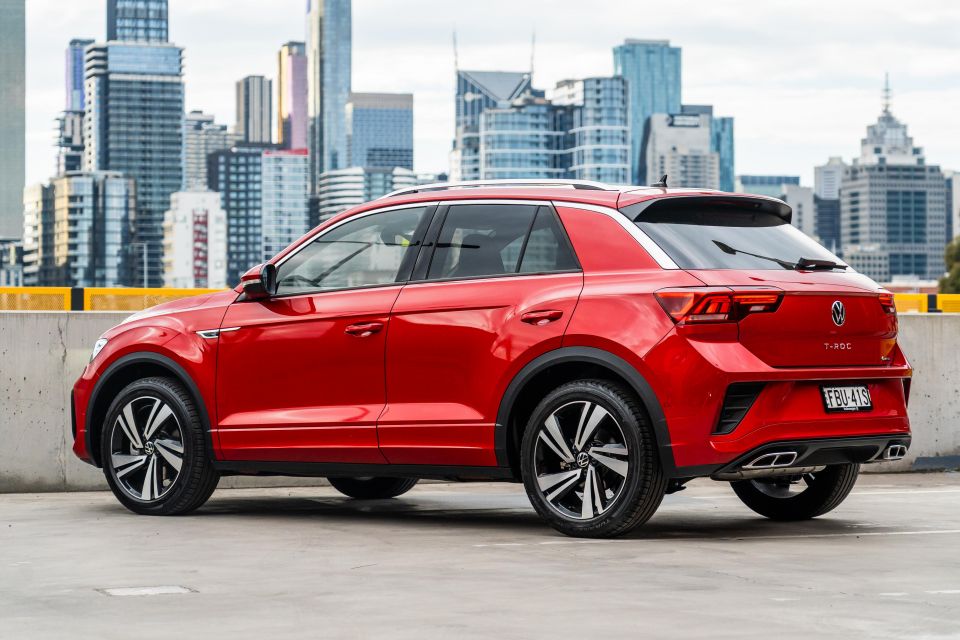
Click the images for the full gallery
Take advantage of Australia's BIGGEST new car website to find a great deal on a Volkswagen T-Roc.
Max Davies is an automotive journalist based in Melbourne, Australia. Max studied journalism at La Trobe University and stepped into the automotive world after graduating in late 2023. He grew up in regional Victoria, and with a passion for everything motorsport is a fan of Fernando Alonso.


William Stopford
15 Days Ago


Damion Smy
14 Days Ago
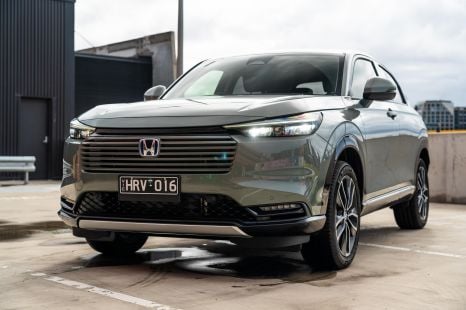

Max Davies
13 Days Ago
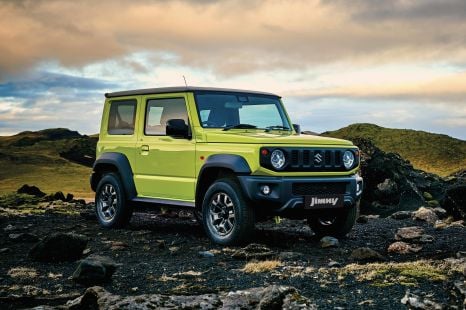

William Stopford
13 Days Ago
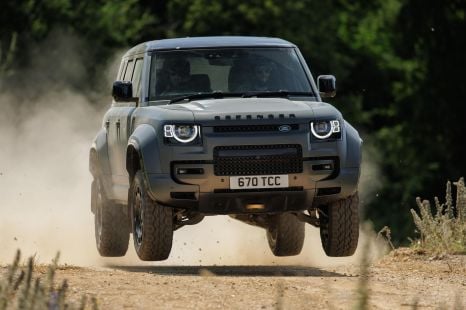

Alborz Fallah
10 Days Ago


Matt Campbell
9 Days Ago